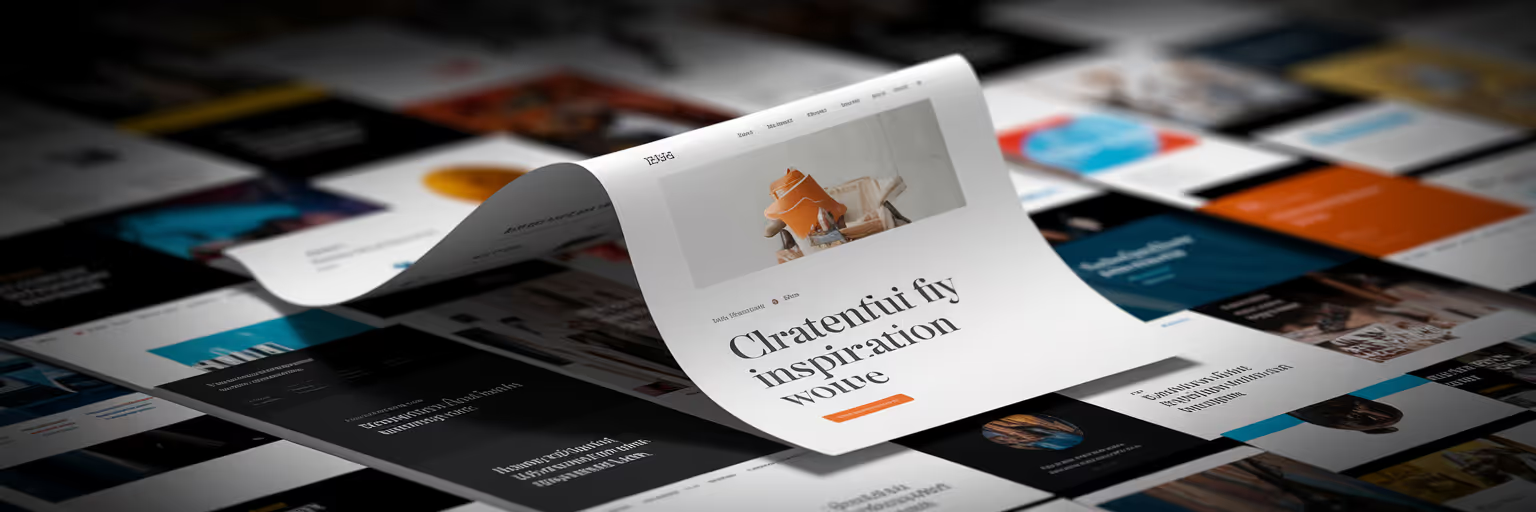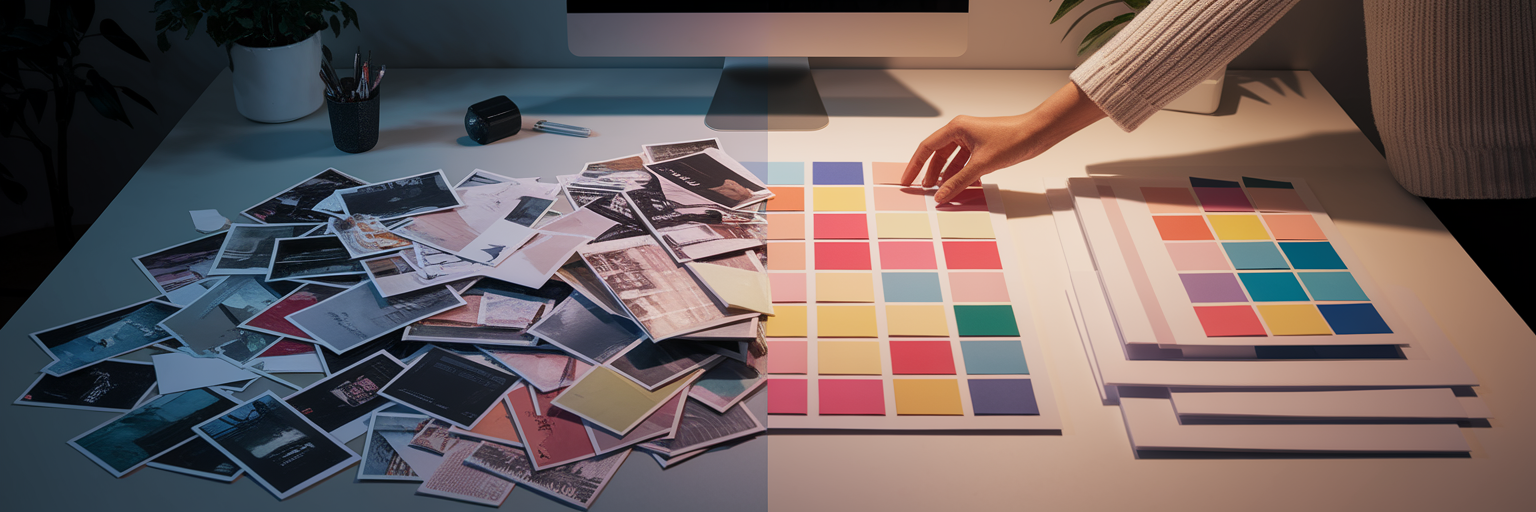If you're a web designer, you know the scene all too well: dozens of browser tabs open, a desktop cluttered with random screenshots, and links scattered across three different notes apps. This isn't a flaw in your process; it's the natural chaos of creative web design research. But what if there was a way to bring order to that chaos? Interactive bookmarking tools offer more than just a place to save links. They represent a fundamental shift in how you gather, process, and organize design inspiration, turning a messy workflow into a streamlined system.
From Browser Chaos to Creative Clarity
The creative process is inherently messy, but your tools shouldn't add to the confusion. Hunting for that one perfect example you saved last week is a frustrating waste of time that pulls you out of your creative zone. The solution lies in moving from scattered links to a structured, visual library.
Instead of just saving URLs, modern bookmarking platforms are built for the way designers think and work. They help you build a centralized hub for all your findings, organize everything with smart, flexible tags, and analyze your research visually. This approach transforms research from a chore into a strategic part of your design process.
Build Your Centralized Inspiration Hub
Your best ideas are probably scattered everywhere. A pin on Pinterest, a shot on Dribbble, a link in a Slack channel, and a few files in a local folder. Trying to pull these together for a project feels like a digital scavenger hunt. This fragmentation doesn't just waste time; it creates a cognitive load that stifles creativity.
Imagine building your own personal "digital design library"—a single source of truth where every piece of inspiration is neatly stored and instantly accessible. This centralized approach saves hours and frees up the mental energy you'd otherwise spend just trying to remember where you saw that one brilliant UI element. It’s about having all your materials in one place, ready for when inspiration strikes.
With a tool like Bookmarkify, you can create dedicated collections for different projects, such as 'SaaS Dashboard UI' or 'E-commerce Product Page Layouts.' This keeps your research focused and relevant to the task at hand. To see what these curated hubs look like in action, you can explore some of our own inspiration boards for ideas.
Organize Smarter with Flexible Tagging

For complex web design research, a rigid folder system just doesn't cut it. A single design element might have multiple attributes: it's a #uipattern, but it also uses #darkmode and features great #typography for a #saas product. A folder forces you to choose one box; a tagging system lets you connect all the dots, reflecting the true, multi-faceted nature of design.
Here’s a simple way to create your own tagging system:
- Start broad: Use high-level tags like
#layout, #component, or #interaction.
- Get specific: As your collection grows, add descriptive tags like
#pricing-table or #onboarding-flow.
- Stay consistent: Decide on a naming convention (e.g.,
#camelCase or #kebab-case) and stick to it for easy filtering.
Modern tools even offer AI-driven tag suggestions to speed things up. While building a tagging habit takes a little effort upfront, the payoff is huge. As research from the Design Management Institute highlights, teams using organized digital systems can significantly reduce research time. A robust tagging system transforms your collection from a simple gallery into a searchable, personal design database.
| Attribute |
Traditional Folders |
Flexible Tagging |
| Flexibility |
Rigid; one location per item |
Fluid; multiple tags per item |
| Context |
Limited to one category |
Rich, multi-faceted context |
| Searchability |
Browse-dependent |
Instantly filter by multiple criteria |
| Scalability |
Becomes cumbersome and complex |
Remains efficient as collection grows |
This table illustrates how a tag-based system is inherently more suited to the complex, interconnected nature of web design research than a traditional folder hierarchy.
Accelerate Analysis with Visual Previews
Designers think visually. So why do we often manage our inspiration with text-based lists of URLs? Reading a link title doesn't spark the same creative recall as seeing the design itself. With visual bookmarking for designers, you see a grid of webpage snapshots, which allows you to spot patterns in layouts, color palettes, or component styles at a glance.
This is a world away from a traditional bookmark manager, where you have to open each link to remember what it was, completely breaking your creative flow. A visual approach keeps you immersed in the design process. A platform like Bookmarkify turns your saved pages into visual cards, creating an instant mood board that is both inspiring and incredibly functional for comparative analysis. You can even save a beautifully crafted design page like this one to see how it instantly appears as a visual card in your collection.
Foster Collective Intelligence Through Collaboration

Sharing design research with a team can quickly become a mess of email threads and disorganized chat channels. Who found what? Where was that link again? Collaborative design tools for bookmarking solve this by creating a shared, living repository of inspiration. Team members, whether they're in San Francisco or Austin, can build on each other's discoveries in real time.
The real power comes from in-context feedback. Instead of a vague "I like this" comment in a chat, you can leave notes and annotations directly on a specific bookmark, making communication clear and efficient. As highlighted by the Harvard Business Review, tools that centralize knowledge are key to fostering collective intelligence within teams. Bookmarkify’s shared collections and commenting features keep your entire team aligned, cut down on redundant research, and speed up the feedback loop, ultimately leading to a stronger final product.
Your First Step to an Organized Workflow
Ready to get started? Here’s your first step. Actionable Tip: Create Your First Curated Collection Today. Pick one specific element you're researching—like 'pricing pages' or 'user onboarding flows'—and use a tool to save and tag 5-10 great examples. It's that simple.
This small habit is the foundation of better design workflow optimization. It turns a simple task into a strategic advantage, leading to more organized research and more innovative designs. For more guides on improving your creative process, check out our blog. Ready to transform your research? Try Bookmarkify for free and build your first inspiration board today.












